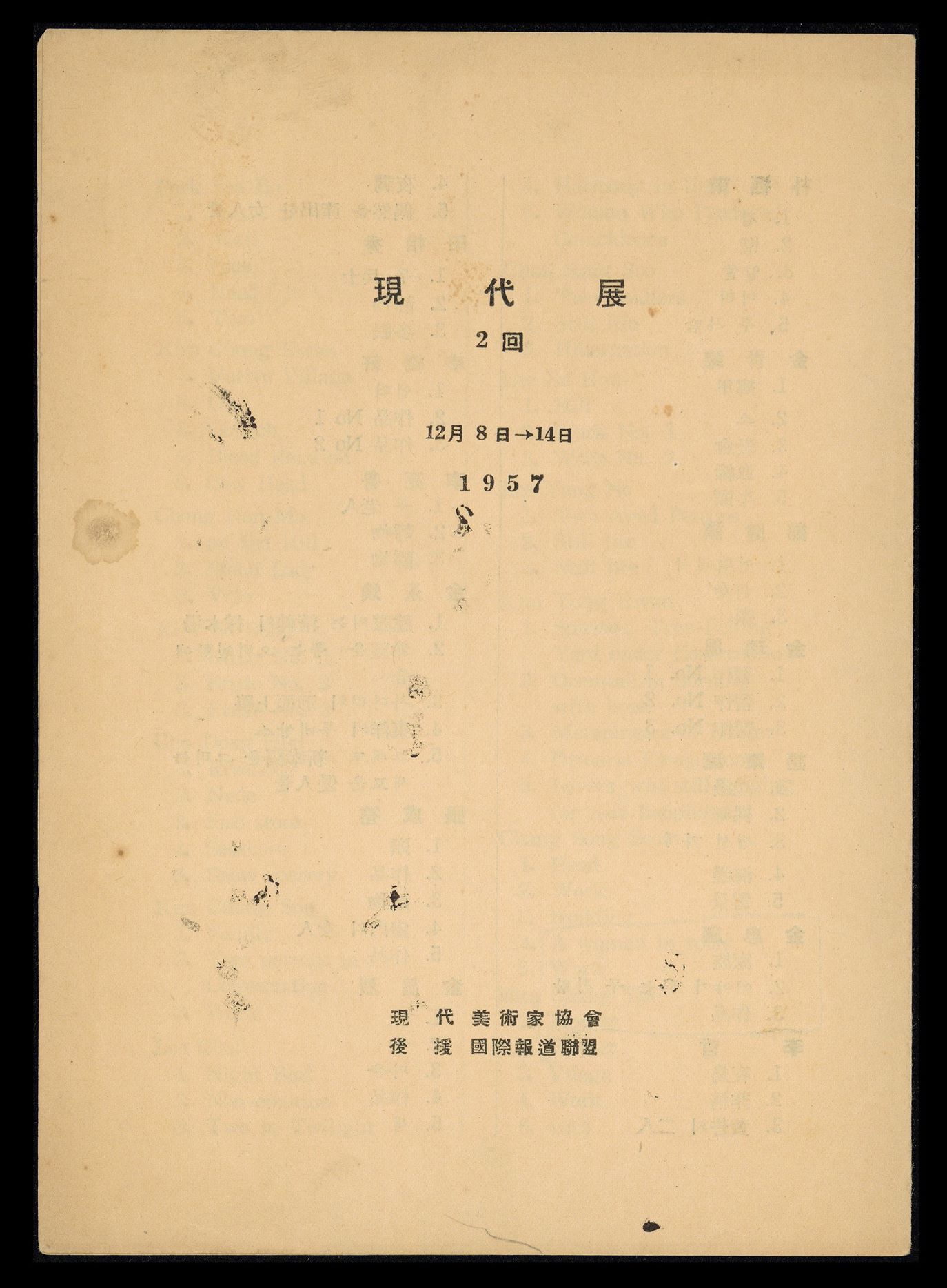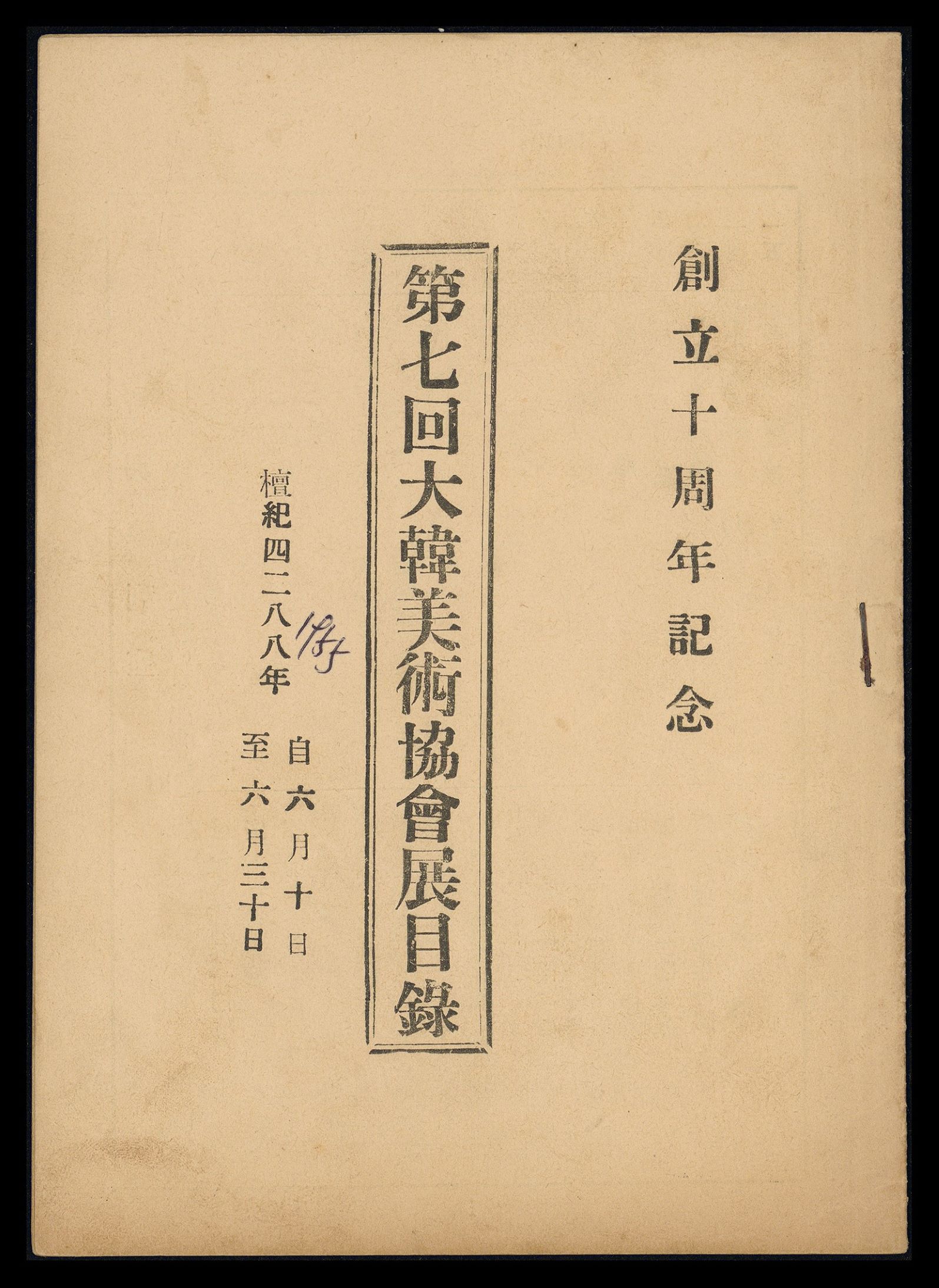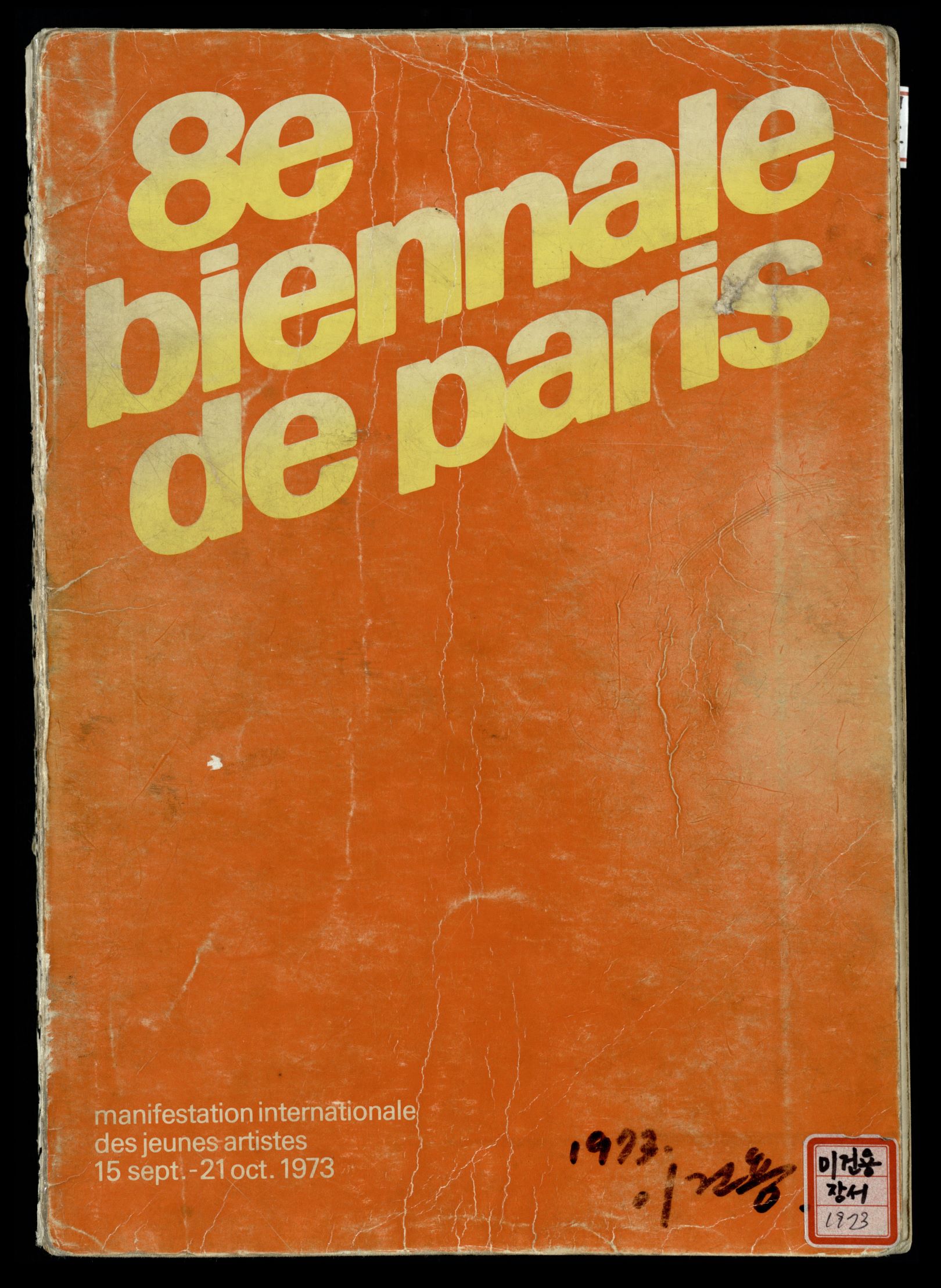
Actuel Inaugural Exhibition, Leaflet, 1962. Image provided by Kimdaljin Art Archives and Museum
Actuel
* Source: Multilingual Glossary of Korean Art. Korea Arts Management Service
Related
-

Park Seo-Bo
Park Seo-Bo(1931-2023, real name Park Jaehong) belongs to the first generation of artists who received art education in Korea after Korea’s liberation from Japan. He was a leading figure in Art Informel and Dansaekhwa. He was born in Yecheon, Gyeongsangbuk-do Province. He majored in Western painting in the College of Fine arts at Hongik University and graduated in 1955. He served as a professor at Hongik University and the board president of the Korean Fine Arts Association (Hanguk misul hyeophoe). Park made his debut as a painter in 1956 through the Four Artists Exhibition that declared resistance to the National Art Exhibition and the established generation. After presenting abstract expressionist work completely different from the established art at the third Hyundae Fine Artists Association exhibition in 1958, he led the Art Informel movement until the mid-1960s. In the 1970s, he headed large-scale special exhibitions, including Independants, the Seoul Contemporary Art Festival, Ecole de Séoul, and Korea: Facet of Contemporary Art. He also played a key role in establishing “Dansaekhwa” as a style of Korean painting in the 1970s. His oeuvre can be divided into three periods. The first period (late 1950s–mid 1960s) is referred to as the Art Informel period, during which Park depicted the post-war situation with distorted and deconstructed human forms, dark colors, and rough matière, particularly in the Primordials series. During the second period (late 1960s–early 1970s), he focused on the modernization of tradition, presenting optical and geometric abstraction with five colors representing the five cardinal directions as the dominant compositional element under the thesis of hereditarus. During the third period (1970s–2023), which is known as the period of monochrome painting, he presented the Ecriture series, in which performance was fundamental to his creation. The Ecriture series can be divided into two periods: before and after year 1982. In the former period, Park repeatedly applied milky oil paint to a canvas and before it dried, drew lines with a pencil or a tool with a sharp tip, thus leaving traces of this act on the canvas. In the latter period, he used water-based paints instead of oil-based paints in an effort to more directly capture his emotions with bright hues inspired by the colors of nature. Until his death, he sought to build the identity of Korean art through various methodologies within a single thesis of ecriture and elevated Dansaekhwa to an international level.
-

Hyundae Fine Artists Association
An art organization formed in 1957 under the leadership of Moon Woosik, Kim Younghwan, Kim Tschang-Yeul, Jang Seong-soon, Lee Cheol, Ha Indoo, Kim Jonghwi, and Kim Cheonggwan. The association held its inaugural exhibition at the United States Information Service gallery from May 1 to 9 in 1957. As part of a new generation of artists who received university education after independence, the members chose the pursuit of the “antithesis of feudal elements that hinder the development of culture” as the task of the association, and they stated the founding purpose of the association as being to achieve “communion with the highbrow universal consciousness that is oriented toward contemporary art.” In the third exhibition, which was in 1958, the association featured Informel art, which heralded the beginning of an era of Informel in Korean art. In 1961, the association held a joint exhibition with the 1960s Artists Association, and in 1962, the two organizations merged to form Actuel.
-

1960 Fine Artists Association
A group comprised of 12 alumni from Seoul National University and Hongik University. The group was active from 1960 to 1961. Its members opposed the National Art Exhibition (Gukjeon) and rejected the artistic traditions established during the Japanese colonial period, and sought to pursue an avant-garde style of art. In 1961, the group disbanded after holding two exhibitions in collaboration with the Hyundae Fine Artists Association, and several members went on to establish the Actuel collective. The group is noteworthy for its popularization of Art Informel within the art community of Korea.
Find More
-

Great Korean Art Association
An art association that formed in 1948, when the Korean Art Association [Joseon misul hyeophoe], which was established in 1945, reformed in parallel with the establishment of the new Korean government. Following independence, the organization reformed and expanded primarily to foster solidarity and anti-communist sentiment in artists, and held the inaugural Great Korean Art Association Exhibition. In June 1961, the association closed officially with the government's comprehensive art institute reformation policy, and in December that year, the association merged into the Korean Fine Arts Association [Hanguk misul hyeopoe].
-

Paris Biennale
The Paris Biennale was an international art exhibition held at the Musée d’Art Moderne de la Ville de Paris from 1959 to 1985. The exhibition only accepted works from younger artists aged 20 to 35. Artists could submit to different categories, such as painting, sculpture, print, and drawing as long their works were created within the four years prior to submission. Unlike other Biennales, the Paris Biennale did not award any prizes. Instead, the committee selected specific works from each genre and offered grants and exhibition opportunities to the selected artists. Korean artists were invited to the first Paris Biennale in 1959, but they only began to participate from the second Paris Biennale in 1961. The committee of the Hyundae Fine Artists Association [Hyeondae misulga hyeopoe], delegated by the Korean Minister of Education, selected participating artists, such as Chang Seongsoun, Chung Changsup, Cho Yongik, and Kim Tschang-yeul for the second; Park Seobo, Youn Myeungro, Choi Kiwon, Kim Bongtae for the third; and Chung Sanghwa, Ha Chonghyun, Jeong Yeong-il, Lee Yangno, Choi Manlin, Park Chongbae, and Kim Chonghak for the fourth. However, after the seventh Biennale in 1963, the Korean Artists Association [Hanguk misul hyeopoe] began to question the fairness of the selection process, and the committee began to invite public submissions from the eighth Biennale onward. The Paris Biennale became a new turning point for Korean artists of the 1960s Art Informel generation by providing an opportunity for them to experience and experiment with new styles.
-

Korean Information Service Gallery
A gallery established in 1957 in Sogong-dong, Seoul. The parent organization of the gallery was the Office of Public Information. The gallery moved to a temporary building in the Northeast section of Deokusung in 1968. The Korean Information Service Gallery was originally a facility where a diverse range of exhibitions including art, crafts, and photography could be held for free, but changes in the Korean Information Service’s policy led the building to be used only for the promotion of government policies starting in April 1972. When the National Museum of Modern Art, Korea (now MMCA) moved to Deosukung Palace in 1973, this branch of the National Museum assumed the role of the Korean Information Service Gallery.






